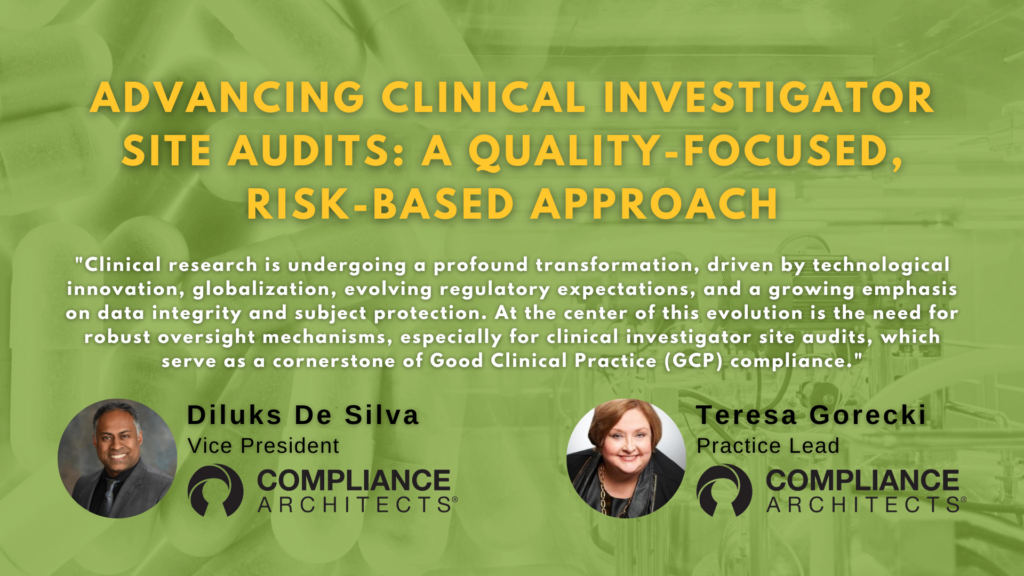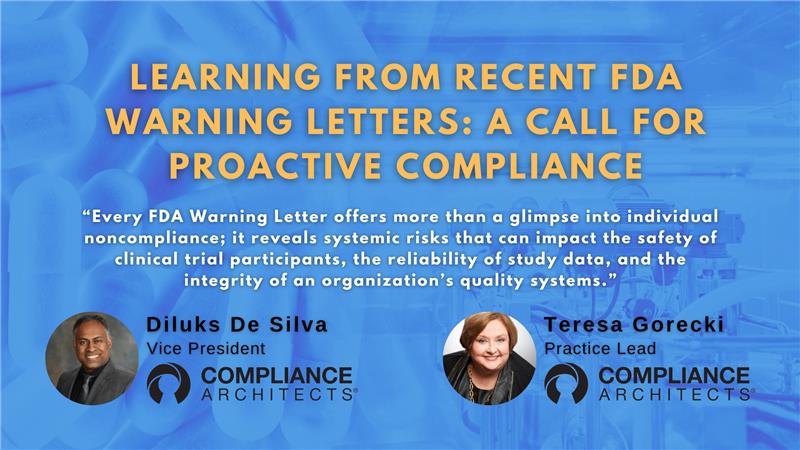Maintaining a regulatory compliance strategy is crucial for any company’s sustainability and success in a rapidly evolving regulatory environment. When faced with substantial challenges, Compliance Architects (CA) demonstrated their expertise by successfully rescuing a company from potentially being sent to the Department of Justice (DOJ) for numerous FDA warnings in just 9-12 months.
This blog post delves into the key accomplishments that made this strategic overhaul possible, focusing on FDA strategy and response, Quality Management System (QMS) enhancements, commitment execution, and capability improvements.
Table of Contents

Strategic FDA Response and Prevention
Developing and Implementing the FDA Strategy
In response to escalating compliance issues, Compliance Architects crafted a comprehensive regulatory compliance strategy to prevent further actions by the FDA and the US Department of Justice. Key elements of this strategy included:
Thorough Review and Response Scoping
Conducted a detailed review of all FDA-related findings, including 483s and Warning Letters, to accurately scope the response.
Regular Updates
Established a system for 483 responses and monthly status updates to the FDA, with the process transitioning seamlessly to the new VP of Quality Assurance (QA) in April 2024.
Regulatory Meetings
Engaged in a critical regulatory meeting with the NE District and ORA in November 2023, facilitating open dialogue and progress.
Ongoing Strategy Refinement
Continued to refine and enhance the FDA strategy based on evolving needs and regulatory feedback.
Enhancing the Quality Management System (QMS)
Key QMS Developments and Improvements
A robust QMS is essential for a regulatory compliance strategy and operational efficiency. CA’s accomplishments in this area include:
- Comprehensive QMS Elements: Developed CAPAs for essential QMS elements such as Complaint Management, MDR Reporting, Design Control, Supplier Quality Management, and more.
- Root Cause Analysis and CAPA Planning: Conducted in-depth CAPA root cause investigations and detailed action planning, including SOP revisions and process mapping.
- Risk-Based Prioritization: Prioritized QMS-related CAPAs based on risk, ensuring that the most critical issues were addressed promptly.
Commitment Execution and Regulatory Support
Successful Project Execution and Oversight
CA’s dedication to meeting FDA expectations and managing commitments led to several key achievements:
- Protocol Development and Execution: Completed critical projects, including protocol development, execution, and report preparation for various initiatives.
- CAPA and Complaint Management: Streamlined CAPA processes and conducted retrospective complaint reviews, significantly reducing overdue complaints.
- Operational Clean-Up: Implemented Operation “Clean Sweep” to reengineer management reviews and CAPA processes, including creating new processes like QRB and HHE.
- Recall and Correction Actions: Managed product recalls and prepared necessary FDA correspondence and strategies.
Building Capability and Organizational Structure
Leadership and Capability Improvements
To support long-term success and compliance, CA focused on enhancing organizational capability and structure:
- Acting VP of QA Role: Took on the role of Acting VP of QA, providing essential management representation and day-to-day support.
- Organizational Review and Development: Reviewed QA organizational skills and staffing, developing a future-state QA organizational chart and job descriptions for key roles.
- Training and Assessments: Developed annual GMP and complaint vigilance training materials and assessed QMS and Quality & Compliance capabilities.
Managing SOW Commitments and Budget
Effective Budget Management
Throughout the project, CA successfully managed SOW commitments within budget, addressing variations among consultants and tracking individual performance as requested by the VP of Finance.
Evaluating the Regulatory Compliance Strategy Effectiveness
Key Strategy Outcomes
The FDA strategy developed by CA proved effective in several ways:
Broad-Reaching Response
Addressed 2023 483 Observations and previous 2022 findings, ensuring a comprehensive approach.
Transparency and Trust
Maintained transparency with the FDA on 483 Responses and complaint trend-related CAPAs, rebuilding trust and credibility.
Voluntary Compliance
Enabled voluntary compliance where possible, allowing sufficient time for necessary work before re-inspection.
Meeting FDA Expectations
The deliverables created or overseen by CA met FDA expectations. Monthly updates received no negative feedback, and mock inspections indicated only minor gaps, which were addressed promptly.
Conclusion
Compliance Architects’ targeted approach and expertise led to a remarkable turnaround for the company in 9-12 months. By developing a robust regulatory compliance strategy, enhancing the QMS, executing critical projects, and building organizational capability, Compliance Architects ensured regulatory compliance and set the stage for future success. Our efforts in this strategic overhaul underscore the importance of a strategic and comprehensive approach to navigating complex regulatory challenges.
Want the whole case study? Complete the form below, and we will email you a copy.
Contact Us
Contact us here to learn more about how Compliance Architects can assist your company with a regulatory compliance strategy.





